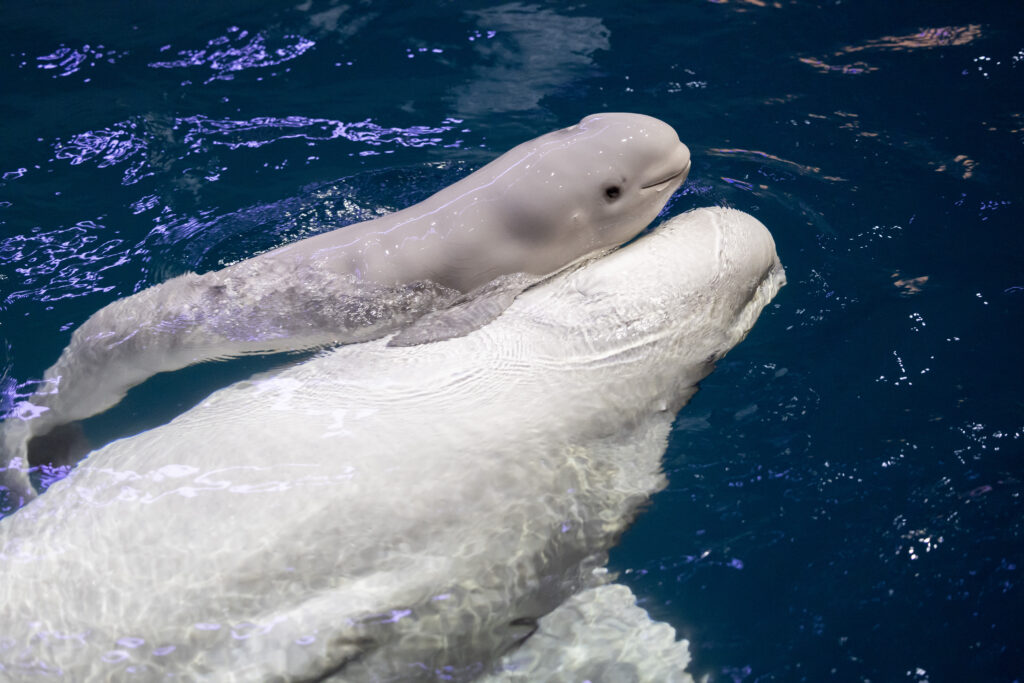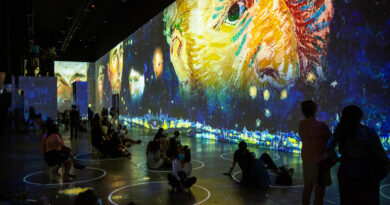Shedd Aquarium Beluga Whale, NAYA, Gives Birth
Chicago’s Shedd Aquarium welcomed a new resident to the Abbott Oceanarium on Wednesday evening: a beluga whale calf born to 35-year-old mother, Naya (NI-yah). Earlier that day, the animal care team recognized signs that Naya was going into labor and closed the Secluded Bay habitat to guests. Hours later, shortly after 6 p.m., the calf was born and took its first breath of air at the water’s surface shortly after – a crucial first step for belugas.
The calf is estimated to be 5 feet long and close to 105 pounds. The sex of the calf will be confirmed later along with paternity. The calf also replaces Atlas (born in 2020) as the youngest beluga at Shedd.
Veterinary and care teams remained onsite throughout the evening and overnight to look after the pair. So far, they have seen Naya gently guide the calf around the habitat and support the baby beluga as it swims and surfaces for air.
“While it’s still very early, we are encouraged by how strong and spirited this calf seems to be,” said Charles Jacobsma, director of animal behavior and training at Shedd Aquarium. “Over the next several weeks, our animal care team will be observing Naya and the calf, collecting data and doing everything they can to make sure they both have all the support they need.”
The first few months of a beluga calf’s life are vital, and Shedd’s animal care team remains cautiously optimistic. Caretakers will be on watch around the clock, looking for Naya and the calf to reach several important milestones including bonding, swimming together (slipstreaming), regular nursing and rapid weight gain for the calf, supported by mom’s fat-rich milk. This quick growth allows beluga calves to keep up the energy needed to swim with mom and withstand the cold temperatures of polar marine water.
To allow time and space for these vital milestones and observations, Shedd’s Secluded Bay habitat will remain temporarily closed to guests. The aquarium will share an update with the public when the calf will be viewable to guests.
Much of what we know about beluga whale gestation and birth has come from the small handful of accredited zoos and aquariums that care for this species. Because beluga births are rarely seen in the wild, data and observations collected from births at aquariums like Shedd provide invaluable insights for scientists and conservationists alike.
For example, understanding neonatal development and birthing milestones can provide insights into how pollution, noise and human activity may disrupt reproductive patterns for wild belugas. This is especially crucial for informing management strategies for some of the most vulnerable subpopulations on the planet – like the critically endangered belugas in Alaska’s Cook Inlet.
Each year, Shedd sends representatives from the animal care team up to Alaska’s Cook Inlet to participate in Belugas Count – an annual event where Shedd team members can share their experience and deep knowledge of belugas with the local community and inspire them to protect wild belugas.
Data and overhead images from Shedd Aquarium’s beluga population also recently helped researchers at the University of Quebec and the Group for Research and Education of Marine Mammals (GREMM) to validate new research methods for non-invasive tracking of the body condition for endangered belugas in Canada’s St. Lawrence Seaway. “The more we understand species like beluga whales, the better positioned we are to contribute to safeguarding them for generations to come,” said Andrew Pulver, vice president of animal care at Shedd Aquarium. “Every birth at Shedd Aquarium is not only a moment to celebrate – it’s a significant stride toward our vision of a world thriving with aquatic life.”
For additional information, please visit https://www.sheddaquarium.org.




